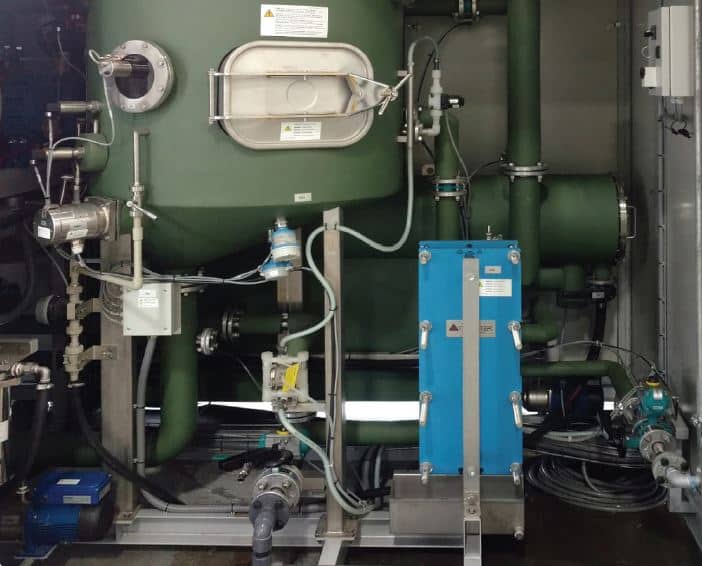Reduce haul-away costs for tanker washdown wastewater
Lowered wastewater disposal costs by ~$250,000/year
Less than one year
A global specialty chemicals company utilizing tanker trucks to deliver its product was producing about 3,000 gallons of wastewater each day tankers are washed. This resulted in about $250,000 in annual costs to haul away the wastewater. The company sought a wastewater treatment solution that would significantly lower the company’s haul-away expenses.

At the company’s concrete additives facility, hundreds of different formulas are produced. The specific additives required for the concrete depend on the type of cement used. When the additive mixture is prepared, it is pumped into the cement that fills tanker trucks, which haul the product to different locations.
After the cement has been delivered and the tanker is empty, it needs to be powerwashed in order to prepare the vessel for the next customer’s cement and additive mixture. At the truck bay, which can accommodate three tanker trucks at one time, about 3,000 gallons of water is used each day to clean tankers. The wastewater from this process contains surfactants, soil from the wash bay, as well as the additives that were unique to the cement being used. All of this wastewater was being routed to a floor drain.
The tanker-washing operation needed a system that would treat the wash water from the tankers, hoses, and floor of the admixture plant’s truck bay. Although the wastewater was classified as non-hazardous, the company needed to reduce the volume of wastewater that would go to the sewer district.
The chemicals company sought an industrial wastewater treatment system to reduce the volume of wastewater the tanker-cleaning process was producing. This would enable the concrete additives supplier to lower its wastewater disposal costs. Due to its Zero-Liquid Discharge (ZLD) capabilities, PRAB recommended the EVALED® Vacuum Evaporator (Model RV F 10), a solution that provides vacuum evaporation and distillation.
EVALED® Evaporators concentrate and remove salts, heavy metals, and a variety of hazardous wastes, producing high-quality distillate that may be sent to sewer. The vacuum evaporator is modular, fully automated, has low energy consumption, and a low CO2 footprint.
After the wastewater from the tanker cleaning is collected in a floor drain, it is now transferred to a holding tank. From there it is sent to a mixing tank for pH adjustment and then it is processed in the vacuum evaporator. After distillation and evaporation in the EVALED® Model RV F 10, the distillate goes to sewer, resulting in considerably lower annual haul-away costs. Return on investment was less than one year.
| Parameters | Value | UM |
|---|---|---|
| Flow Rate | 3,000 | Gal/day |
| Temperature | 74.5 | °F |
Model RV F 10